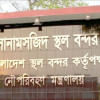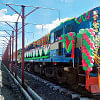Proper feasibility study a must for railway projects

That Bangladesh Railway (BR) has been a loss-incurring entity for almost a decade is not news. Yet, it is difficult not to get flabbergasted by BR projects that not only squandered public money during the implementation phase, but continues to be a burden for taxpayers. The lone passenger train operating on the Rajshahi-Rajbari-Gopalganj route, which railway authorities extended to bring Tungipara, the birthplace of the father of the nation, under the railway network is one such example.
According to a report in this daily, the government approved this project in 2010 to revive a 75-kilometre old, inoperative line from Kalukhali of Rajbari to Bhatiapara Ghat of Gopalganj and build a 32-kilometre line from Kashiani to Gopalganj to connect Tungipara. The project was completed in 2018, five years behind schedule and with a huge cost overrun. Till date, it has failed to generate enough return on investment because only one train runs on the Tk-2,011-crore line.
Additionally, there was no monitoring or quality checks of the material used by the contractors, essentially making the line risky. Now four stations and several staff quarters built along the route remain unused and are falling into decay. A top railway official attributed the underutilisation to the shortage of manpower, locomotives and carriages, but failed to acknowledge the issue of low traffic demand on that route.
We have repeatedly called attention to irregularities, inefficiency and poor performance of the railway authorities in implementing viable and profitable projects, and ensuring proper maintenance of its physical assets and infrastructure. But no one has ever been held accountable for BR's continuous wastage of public funds. Around the world, railway, a mode of transport with a low carbon footprint, is witnessing a comeback. If we want to follow on that track, we must ensure pragmatic and judicious leadership at the BR.


 For all latest news, follow The Daily Star's Google News channel.
For all latest news, follow The Daily Star's Google News channel. 







Comments